Copyright 2016 by David Nash All rights reserved. No part of this book may be reproduced in any manner without the express written consent of the publisher, except in the case of brief excerpts in critical reviews or articles. All inquiries should be addressed to Skyhorse Publishing, 307 West 36th Street, 11th Floor, New York, NY 10018. Skyhorse Publishing books may be purchased in bulk at special discounts for sales promotion, corporate gifts, fund-raising, or educational purposes. Special editions can also be created to specifications. For details, contact the Special Sales Department, Skyhorse Publishing, 307 West 36th Street, 11th Floor, New York, NY 10018 or .
Skyhorse and Skyhorse Publishing are registered trademarks of Skyhorse Publishing, Inc., a Delaware corporation. Visit our website at www.skyhorsepublishing.com. 10 9 8 7 6 5 4 3 2 1 Library of Congress Cataloging-in-Publication Data is available on file. Cover design by Rain Saukas Print ISBN: 978-1-63450-560-4 Ebook ISBN: 978-1-5107-0158-8 Printed in China Dedication This book is dedicated to all the hard working parents who sacrifice their time, energy, and resources to raise the future of our country. It doesnt take a village to raise a childit takes a parent. The most important thing that parents can teach their children is how to get along without them.
Frank Clark Table of Contents Introduction Tell me and I forget, teach me and I may remember, involve me and I learn. Benjamin Franklin Deciding what projects to include in this book was one of the hardest things I have done as an author. Not knowing the age or temperament of future readers preclude some very neat projects, however, I do believe that learning how to control things that are potentially dangerous (such as fire and power tools) is a vital component of growing up. I did enlist the help of my wife (who is a middle school special education teacher), my mom (who is a nationally board certified middle school teacher), as well as my limited experience teaching after school programs in order to select projects that would interest middle school-aged childrenas well as to include some that would challenge older elementary-aged children with good adult supervision. Some projects may even interest a bored teenager. You may notice that there are more kitchen-related projects than I normally include in a project book.
This is done purposely, as it seems to me that cooking is a great way to introduce the concepts of self-confidence, independence, and attention to detail. I only began to gain confidence as a DIYer when I learned to make such scary items as cheese, linked sausages, and flavored vinegars. I would hope that this process can be started by completing fun campfire desserts like roasted Rolo marshmallows. My wife uses cooking in her classroom because she believes that cooking helps introduce math and science concepts such as measurements and cause/effect. If I could redo any of the mistakes of my childhood or early adulthood I would take a greater interest in working with my elders. My grandfather was a mechanical genius.
He could create functional objects in any medium; he could weld, plumb, build, run heavy equipment, as well as use precision machine tools. He could repair almost anythingand when I could have learned at the knee of a master tradesman I preferred to sit in the air conditioned house and watch cable. I am not an expert in child raising, but I know that kids need skills, they need to gain confidence by doing. And as a I have a duty to get my son out of the house and into a mess of dirt, grease, and wood shavings so that he had a chance to learn what he can do if he sets his mind to a task. In the end, this book is very similar in nature to my other project books. There is an open secret that I believe that the actual projects are not nearly as important as the process that occurs when you actually work them with your children.
Please work these projects with your children, not for your children. It does not matter if the end result is not pretty, or even if it works. What this book is about is allowing kids the opportunity to expand their abilities and grow their self-confidence. No matter what your parenting style, skills, or philosophy, it is my belief that as parents we owe it to both our children and the world as a whole to ensure our fledglings learn the following skills (at a minimum) before they leave the nest: How to take responsibly for their actions How to work both singly and as a member of a team How to learn How to both take and give orders How to think for themselves and question authority How to manage their time to get necessary tasks accomplished by the deadlines How to tell the difference between a want and a need How to use basic tools for repairs How to cook more than microwaveable meals and ramento include shopping and meal planning How to clean How to be frugal How to budget and manage moneyto include staying out of debt It is my hope that the projects in this book help you teach these things to your children in a fun and accessible way. How to Use This Book Not knowing the age, skill level, or preferences of your child, I cannot recommend starting at chapter one and working through this book sequentially as I normally suggest. If you have already incubated a love of cooking in your child you may want to start with the more interesting cooking projects, or avoid them until you and your children complete more mechanical projects.
Or you just may take a hands-off approach and give your kid the book and see what they want to try first. Thats how my mom raised me; she gave me lots of cool project books and then stood back and helped me as needed. No matter what order you decide to work this book, what is important is that you do the projects with your child. Let them explore, make decisions, and use tools. Guide them, help them, but both of you will enjoy and gain more from these projects if you let your kids experimenteven if they fail. PROJECT 1 BOTTLE CAP CANDLE  The Materials Simple beeswax candles are very easy to make, last a long time, dont smoke or leave soot, and make a very clear light.
The Materials Simple beeswax candles are very easy to make, last a long time, dont smoke or leave soot, and make a very clear light.
However, they can be large and take up too much space to put in small survival or bug out kits. Our first project in this book is to recycle household scrap into a very small candle that fits very well in minimalist survival kits in addition to weighing next to nothing. I find that it is very easy to construct these from the wax drippings from a burning candle, but you can make them in bulk by microwaving a small amount of wax in a Pyrex container (the wax will be extremely hot so do not use plastic). This is definitely a project that requires adult supervisionbut it is a guaranteed hit with pre-teens. I have never known an eleven- or twelve-year-old that did not like playing with fire... Material: Wicking materialabout inch of cotton or other natural fiber string per candle Metal bottle cap Wax.
I use beeswax, because it is easily available to me, but paraffin wax can also be used and can be purchased at almost any grocery store near the canning supplies. Procedure: 1. Put your cap upside down on your working surface. 2. Place a drop of hot wax in the center of the cap. 3.
Place one end of your string into the wax to set it in place. 4. Fill the cap up with wax. 5. Let cool, and put in your emergency kit with a lighter or other simple fire starter. 

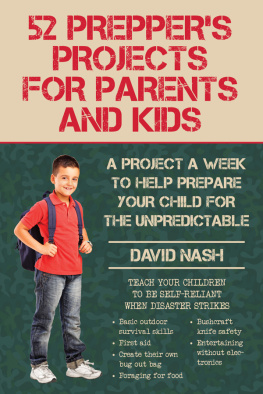



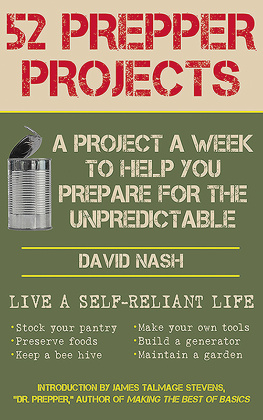
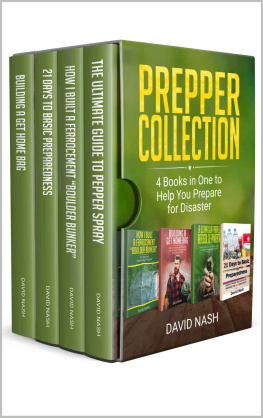

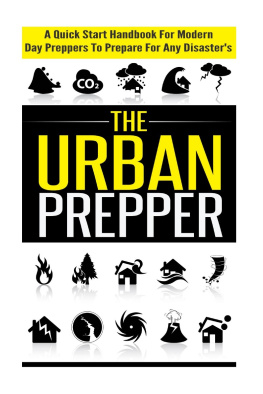

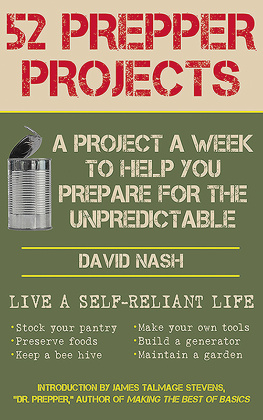
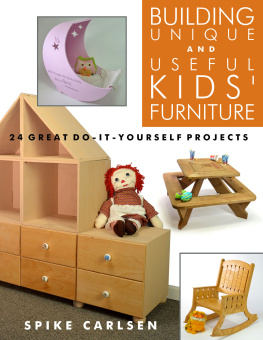
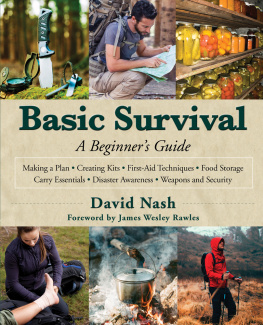
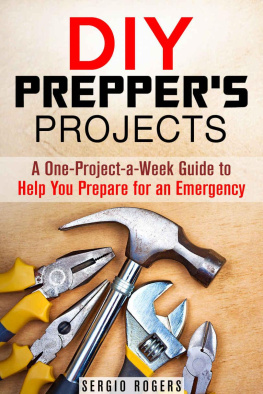
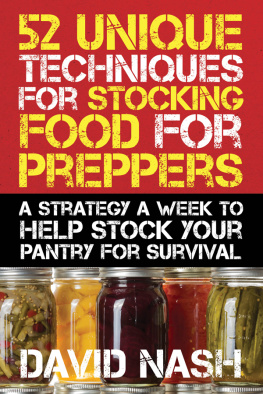


 The Materials Simple beeswax candles are very easy to make, last a long time, dont smoke or leave soot, and make a very clear light.
The Materials Simple beeswax candles are very easy to make, last a long time, dont smoke or leave soot, and make a very clear light.